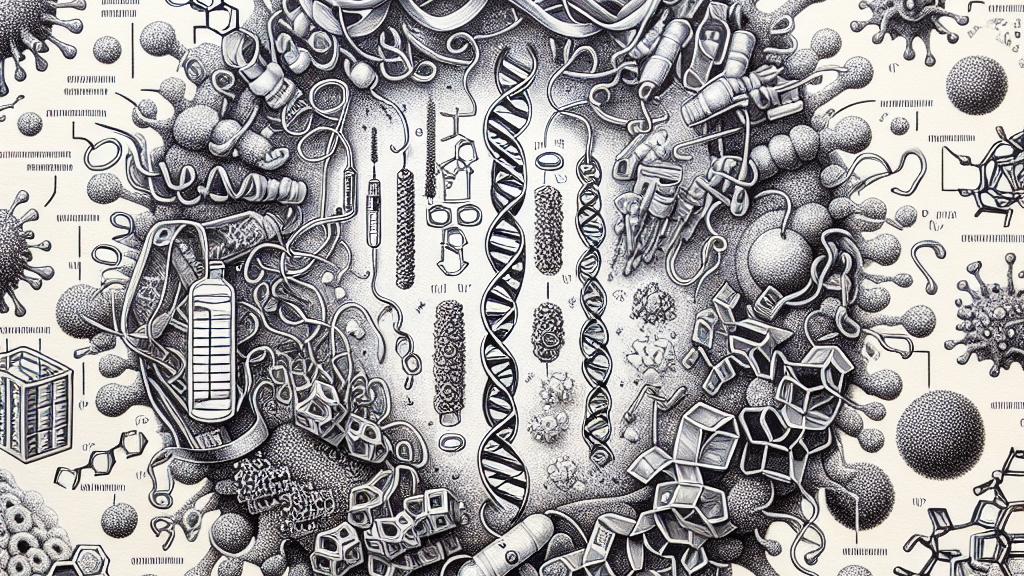The Evolution of Protein Folds and Their Roles in the Virome
Overview
- Examines how protein folds are crucial for the behavior and functionality of viruses.
- Reveals exciting discoveries about the vast and unique diversity of the human virome.
- Explores the profound effects of protein structure variations on their biological roles and therapeutic potential.

The Intricate Mechanisms Behind Protein Folds
Protein folds serve as the backbone of biological function; each protein’s folded shape is a direct result of its specific amino acid sequence. This folding process is not merely a random occurrence—it is an intricate dance that determines how proteins interact with one another and with other molecules. For instance, enzymes often act as biological catalysts, speeding up reactions that would otherwise occur too slowly to sustain life. Consider the case of DNA polymerase, an enzyme crucial for DNA replication. Its precision in folding allows it to bind to DNA strands and synthesize new ones effectively. Furthermore, the viral capsid protects the genetic material of viruses, like that of the influenza virus, while also being essential for the virus’s ability to infect host cells. By studying protein structure at various levels—primary, secondary, tertiary, and quaternary—scientists unlock essential insights into how molecules function, thus understanding the machinery that sustains both health and disease.
Unraveling the Mysteries of the Human Virome
The human virome presents a rich tapestry of viral life invisible to the naked eye, yet it plays a significant role in our health. Recent breakthroughs have shown that the AlphaFold database now boasts over 500,000 detailed protein structures from a variety of organisms, reflecting a wealth of diversity within our virome. To illustrate, research indicates that our unique virome can consist of viruses that are either symbiotic, enhancing our immune response, or pathogenic, leading to diseases like the common cold or even more severe conditions. Notably, some viruses can integrate into human DNA, acting as endogenous viral elements that may influence genetic expression. Such findings underscore the necessity of studying this intricate ecosystem, as understanding our virome can guide the development of novel therapies and illuminate how viral exposures shape overall human health.
The Profound Link Between Protein Structure and Function
Exploring the connection between protein structure and function is essential for grasping the complexities of biology. This link is vividly highlighted by hemoglobin, whose structure subtly changes when it binds oxygen, enhancing its ability to transport this vital molecule throughout the bloodstream. Such transformations exemplify how minor alterations in structure can result in major shifts in function. Moreover, targeted drug design leverages this understanding; by aiming at specific protein structures in viruses, scientists can create therapies that disrupt viral replication, offering hope against diseases such as HIV and hepatitis C. Ultimately, recognizing and manipulating these relationships empowers researchers to innovate medical treatments that can effectively combat viral infections. It’s a testament to the dynamic interplay between form and function that sustains life.

Loading...